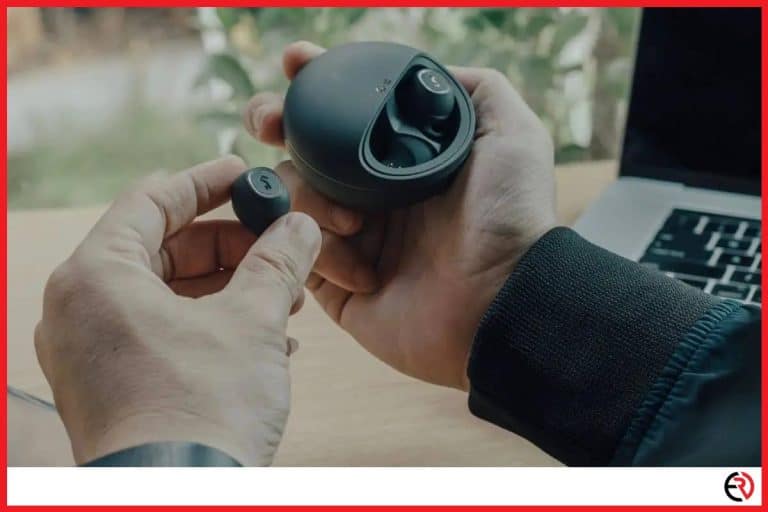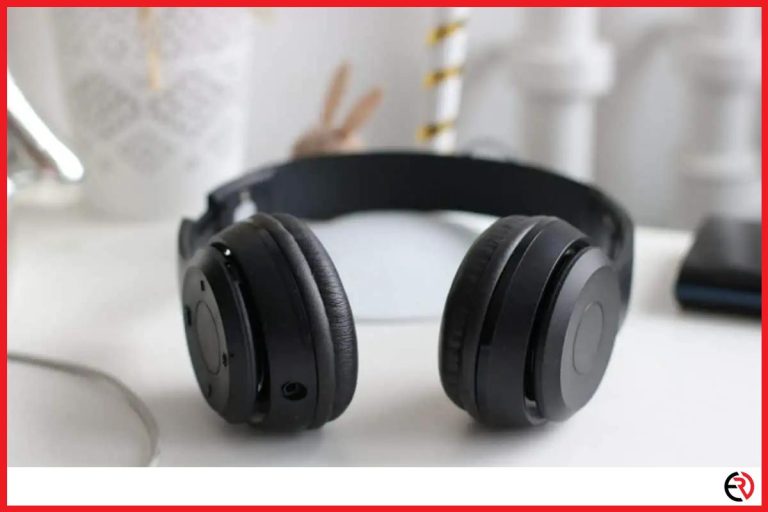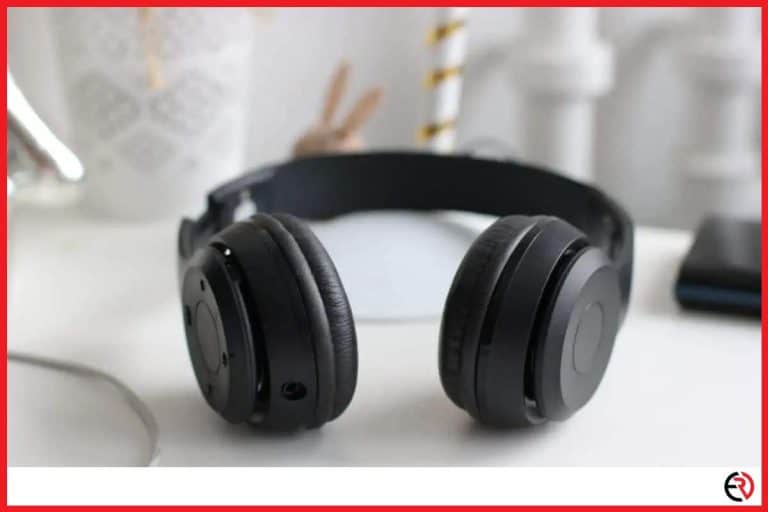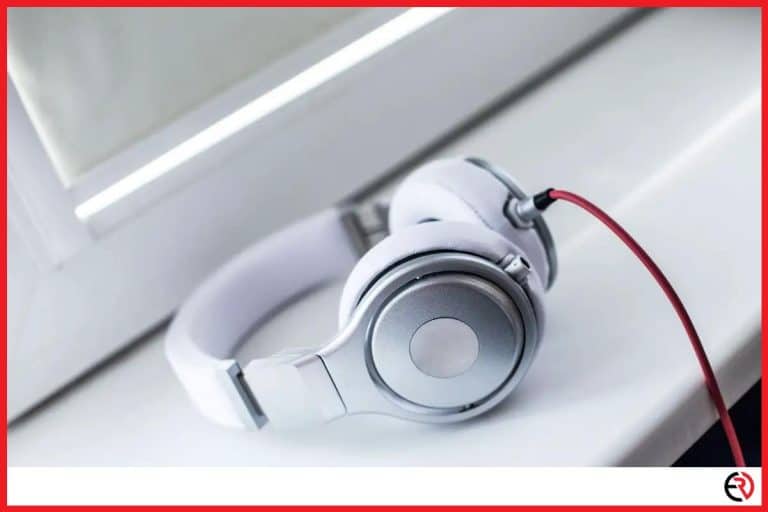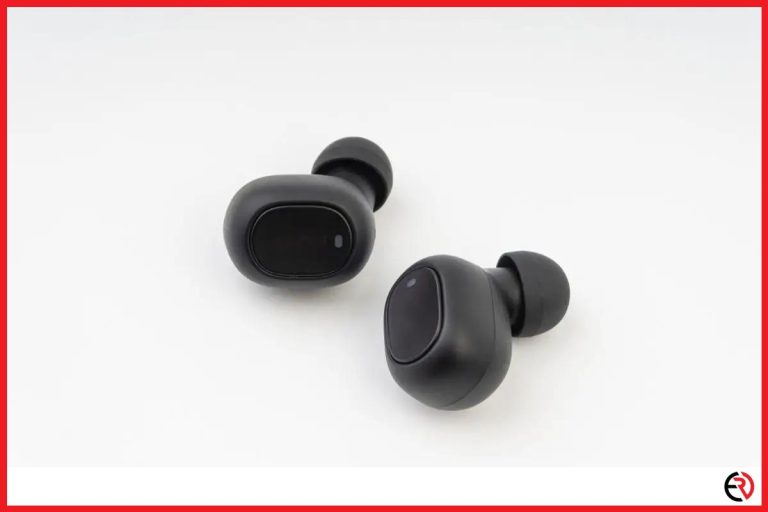Bluetooth Codec Comparison (What are the differences?)
This post may contain affiliate links which means that, if you choose to make a purchase, I may earn a small commission at no extra cost to you.
Historically, when buying a pair of wireless Bluetooth headphones, people generally used to look at specifications such as the driver type, driver size, sensitivity, impedance, etc. However, nowadays, it is also necessary to learn about the types of Bluetooth codecs that different Bluetooth headphones support before you make the final decision.
If your Bluetooth headphone supports a premium Bluetooth codec like aptX HD or LDAC, it can match the quality of wired headphones most of the time. However, if you own a pair of budget-friendly Bluetooth headphones that only supports the SBC Bluetooth codec, you may be disappointed with the sound quality of your cans, no matter the specification of the device.
What is Bluetooth Codec?
Bluetooth codecs are the type of audio codecs that are supported by Bluetooth headphones. There are several Bluetooth codecs but not all of them are supported by every Bluetooth headphones. This is because cheaper Bluetooth headphones contain low-quality analog-to-digital converter (ADC) and digital-to-analog (DAC) that lacks the support for premium Bluetooth codecs.
An audio codec (coder-decoder) is a hardware or software that is capable of encoding and decoding audio data stream or audio signal. Basically, the function of an audio codec is to compress and decompress the digital audio using the algorithm defined by the media audio coding format (MP3, FLAC, AAC).
In order to enjoy the full benefits of the Bluetooth codec supported by your Bluetooth headphones, the audio source (smartphones, laptops, etc) must also support the Bluetooth codecs supported by your cans.
How does a Bluetooth Codec function?
When you stream an audio file from your smartphone or any other audio source to your Bluetooth headphones, a number of steps have to happen before you can hear the audio.
1. Firstly, the sound signal stored as Mp3, WAV, FLAC or any other audio file format is encoded by the audio source into the specific Bluetooth codec type supported by your smartphone and Bluetooth headphones.
2. Once your Bluetooth headphones receive the sound signal in the encoded format, the Bluetooth codec hardware inside it decodes it again so that you can hear the audio.
You can change the Bluetooth codec type in the developer options menu of your smartphone. The list of options available will reflect the Bluetooth Codecs supported by your cans and audio source.
Common terms that you should know
Before we discuss and compare the various types of Bluetooth codecs, their functions, advantages, and disadvantages, you should get acquainted with a few common terminologies that will help you to understand how each of them differs from one another in a better way.
Some common terminologies related to audio are listed below:
1. Sampling rate (Hz) – Audio sampling is the process of recording an analog sound signal in the form of a digital audio signal. Sampling rate a.k.a sampling frequency is the frequency at which the sampling is done per second. The sampling rate is measured in Hertz (Hz).
The common human hearing range is between 20-20,000 Hz. According to the Nyquist theorem, it is necessary to sample at a double-data-rate to capture the whole spectrum of frequency that human beings are able to hear. Thus, sampling is commonly done at sampling rates of 44.1 kHz (CD quality) and 48kHz, although it can reach up to 96 kHz.
2. Audio Bit Depth – The audio bit depth can be defined as the number of bits of information contained in each sample. The higher the bit depth, the higher the resolution of the audio file will be. Thus, an audio file with a higher bit depth will have better dynamic range and signal-to-noise ratio. CD-quality audio files have a bit depth of 16 bits per sample and high-quality audio files suited for as Blu-ray discs or DVDs support 24 bits per sample.
The audio bit depth affects the file size and bit rate.
3. Bit rate – The term bit rate can be defined as a measure of the digital bandwidth consumption or throughput. Thus, it is a measure of the number of bits that can be processed or transferred over a unit of time. The higher the bitrate of an audio file, the better the quality will be in general.
Bluetooth Codec Comparison Table
| Features | SBC | AAC | aptX | aptX HD | aptx Low Latency | aptX Adaptive | LDAC |
| Bit depth | 16 bit | Up to 24 bit | 16 bit | 24 bit | 16 bit | 16 bit, 24 bit | 16 bit,24 bit |
| Bitrate | Up to 342 kbit/s | Up to 320 kbps | 384 kbps, 325 kbps | 570 kbps | 352 kbps | Adjustable: 279 to 420 kbps | Adjustable: 330 kbps, 660 kbps, 990 kbps |
| Sample rate | Up to 48 kHz | Up to 48 kHz | 48 kHz, 44.1 kHz | Up to 48 kHz | 44.1 kHz | 48 kHz, 44.1 kHz | Up to 96 kHz |
| Overall Sound Quality | Average | Good | Good | Very Good | Good | Good to Very Good | Good to Very Good |
| Supported Devices | All devices | Wide variety of devices | Many devices | Some devices | Some devices | Some devices | Some devices |
Types of Bluetooth Codecs
Now that you have a basic understanding of the common terms used to describe the specifications of various Bluetooth codecs, it’s time to have a look at them in detail. The most popular types of Bluetooth Codecs are described below:
1. SBC – The SBC codec or low-complexity subband codec is the default Bluetooth codec that is supported by every Bluetooth headphones. It was created to achieve an acceptable level of audio quality while keeping the bandwidth limitations of Bluetooth connection and processing power of Bluetooth devices in mind. So, although the codec has low computational complexity, the audio quality will only be average at best.
The SBC codec works by breaking down an audio signal into different frequency bands and encoding each separately to compress the digital data and reduce the file size. Thus, it is a lossy compression algorithm. The SBC codec is based on the principles of the psychoacoustic model and exploits the phenomenon of auditory masking. Essentially, it eliminates masked signals or weaker sound signals which may not be perceptible to the human ear in the presence of louder signals.
While the difference in audio quality may not be that great, the discard information would still produce a perceptible difference when compared to the original audio file.
The SBC codec supports sampling frequencies of up to 48 kHz and both stereo and mono audio streams. Although the codec has no bitrate limitations, the average bitrate of SBC codecs can vary from 192-320 kbps with a max limit of 345 kbit/s for stereo streams.
2. AAC – The AAC or Advanced Audio Coding is designed to be the successor of the MP3 format and considered the audio coding standard for lossy digital audio compression. The codec can produce better quality audio signal compared to MP3 while maintaining lower file sizes because the coding strategies it implements is based on a wideband audio coding algorithm.
Essentially, it eliminates redundancies in the coded audio and discards the signal components that are perceptually irrelevant. AAC offers a maximum bitrate of 320 kbps for Bluetooth headphones but most only support 256 kbps. This results in an audio file size that is comparable to a mid-quality MP3 but the quality will be better than the MP3.
The AAC codec is supported by default in Apple devices, YouTube, gaming consoles such as PlayStation and Nintendo DSi, etc.
3. aptX – The aptX codec was originally developed by Dr. Stephen Smyth in the 1980s. It is a family of proprietary audio codec compression algorithms developed and owned by Qualcomm. This codec was developed to introduce sonic benefits over the SBC codec when streaming real-time lossy stereo audio over Bluetooth. It has a compression ratio of 4:1 and can maintain up to 4 stereo pairs of AES3 audio.
The aptX codec allows a bit rate of up to 384 kbps at a sampling rate of 48 kHz and a bit depth of 16 bit. Thus, it allows users to experience CD-like quality over a wireless Bluetooth connection.
4. aptX Low Latency – The aptX Low Latency codec is the normal aptX codec with a few modifications to its buffer settings to maintain a latency of about 40ms. It was designed as a solution for audio-video synchronization issues that occur in gaming apps or when streaming videos. Generally, any delay over +40ms or -60ms in such usage scenarios can produce a perceptible difference in audio-video synchronization. Aside from the improved latency. aptX Low Latency codec has no improvements over normal aptX codec.
It did not experience widespread adaptation in smartphones as it required a dedicated wireless antenna to function properly.
5. aptX HD – The aptX HD is an improved encoding profile of the original aptX codec and is designed to produce wireless HD sound or ‘near-lossless’ sound on the devices that support it. It features a better signal-to-noise ratio which results in lower background noise and keeps the sound distortion low with Total Harmonic Distortion (THD).
Although the codec is considered lossy, it can produce a ‘near-lossless’ audio quality because it supports a ‘hybrid’ coding scheme. This is possible because the peak or average compressed data rates must be capped at a certain level for some applications. Due to this, it can retain a dynamic range of at least 120 dB and audio frequencies of 20 kHz.
The coding latency is a scalable parameter of the codec. By dynamically adjusting the levels of computational complexity and compression, and depending on other configurable parameters, the latency of this codec can be scaled down to as low as 1 ms for sample audio at 48 kHz.
aptX HD has an end-to-end latency of about 150 ms but it outperforms lossless codecs when the coding latency is limited to 5 ms or less. The aptX HD codec allows a bit rate of 576 kbps at a sampling rate of 48 kHz and a bit depth of 24 bit.
6. aptX Adaptive – The aptX adaptive is marketed as the next-generation audio codec by Qualcomm that features an adaptive bitrate, dynamic low latency, and offers HD audio quality over wireless Bluetooth connections. Essentially, it can be considered an improvement over the previous generation of all aptX codecs, combined into a single codec.
The aptX Adaptive at 420kbps and 279kbps produces the same sound quality as aptX HD at 576kbps and aptX at 352kbps respectively. This is possible because the aptX Adaptive has a compression ratio of between 5:1 and 10:1. Plus, it only needs a shared wireless antenna to function and offers an end-to-end latency of 50-80 ms.
The aptX Adaptive codec supports 24 and 16-bit depths at 48 kHz and 44.1 kHz respectively and is backward compatible with older aptX codecs.
7. LDAC – The LDAC is an audio codec developed by Sony that is designed for streaming High-Resolution (Hi-Res) audio signal over Bluetooth connections. Although LDAC is a lossy codec, it allows more efficient data compression compared to SBC as it implements a hybrid coding scheme based on the Modified discrete cosine transform.
LDAC supports 3 kinds of bit rates or transmission rates that can be selected manually:
- Connection priority mode – 330 kbps
- Normal mode – 660kbps
- Quality priority mode – 990kbps
When the quality priority mode is selected, there is no need to down-convert hi-res audio (96kHz/24bit) unlike SBC for streaming via Bluetooth. This allows the device that supports the LDAC codec to transmit 3 times the data as compared to SBC.
The LDAC codec also supports a variable bit depth of 16 to 24 bits and a variable sample rate of 44.1 to 96 kHz respectively.
Which Bluetooth Codec is the best?
It is hard to answer which Bluetooth codec is the best because every codec has its pros and cons and are suitable for different scenarios. In reference to Bluetooth codecs, the term ‘best’ can be applied based on sound quality, sound reproduction, connection stability, and latency.
Plus, there are other factors that you have to keep in mind when you decide which Bluetooth headset to buy. Let us explore these below:
1. LDAC – Generally, LDAC is known to produce the best sound quality under optimal conditions or good connection stability. When operating in the Quality priority profile, it can reproduce high-resolution audio files almost as original as the original file and as faithfully as wired connections.
However, with the introduction of a little distance from the sound source or poor connection, the signal is prone to more degradation than other types of Bluetooth codecs such as aptX HD. Plus, at similar distances, LDAC suffers from greater connection loss compared to aptX HD.
2. aptX HD – aptX HD is limited to producing CD-quality audio and cannot simulate the experience of listening to lossless audio. However, it can be argued that most people would not be able to distinguish any difference between CD-quality audio and high-resolution 24-bit audio.
A good reason to opt for aptX codecs is that these utilize hard-coded profiles. So, the coding factors of aptX such as the bitrate cannot be changed by the manufacturers without modifying the encoder and decoder. As Qualcomm only distributes the reference encoder as a library to the licensees, such an act is impossible.
Thus, aptX will offer the same sound quality and you will not have to second-guess anything.
3. AAC – When the audio source is an iOS device, AAC can produce excellent quality sound even though it is capped at 256 kbps bit rate. Also, although it is prone to generation loss when playing a lossy format such as MP3 even at 320kbps, the difference is negligible.
Now, when it comes to Android devices, the sound quality produced by AAC varies greatly depending on the smartphone. This can result in a good to unacceptable music listening experience.
Unlike Apple devices, Android smartphones don’t have a universal way of handling this power-hungry codec. So, it is suspected that AAC triggers the power saving features implemented in Android devices which causes inconsistent streaming quality, audio skipping issues, etc.
Thus, unless you own an Apple smartphone, it is best to avoid AAC and opt for AptX or LDAC.
4. SBC – SBC is known as the universal codec and is supported by all Bluetooth headphones. Thus, it creates the least compatibility issues. Plus, it is more budget-friendly. If you are fine with choosing the SBC codec it is wise to choose a Bluetooth headphone that has better quality hardware inside and good reviews.
Conclusion
Typically, aptX HD is the codec recommended for android users while AAC is the codec recommended for Apple users. However, the actual specifications or hardware of the Bluetooth headphones should always be the priority.
Suppose, for the same budget, you can choose between two Bluetooth headphones. One of which only supports aptX but has better sound drivers and technical specifications compared to the other one which supports aptX HD or LDAC but has lower quality hardware.
How will you choose? Well, the best way to decide is to compare both models. If you can physically compare the two headphones by visiting a store, that will be the best method. Otherwise, you would have to decide by reading online reviews and comparing the ratings.



